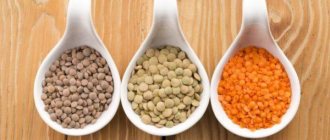What are "oxalates"
The term denotes salts of an acid (oxalic). The substances enter the human body with some plant products. Their formation is also possible as a result of biochemical reactions.
Oxalates are distinguished by their hard consistency and the presence of spikes (bumps) on the surface. The sharp edges of natural substances cause damage to surrounding tissues and irritation, which leads to pain.
An increase in oxalate levels increases the risk of kidney pathologies and the development of stone disease. Scientists suggest that high concentrations of oxalic acid salts provoke autism and damage to organelles (cell mitochondria). Their dysfunction provokes:
- fibromyalgia;
- pain;
- inflammatory processes;
- disturbances in the functioning of the immune and nervous systems.
Important!
Often, high levels of oxalates are indicated by pain in muscles, joints, and eyes. Increased fatigue is often observed. The following reasons are cited that explain the excessive saturation of the body with oxalic acid salts:
- a genetic factor consisting in the mutation of certain genes;
- abuse of certain foods (citrus fruits, carbonated drinks, green vegetables);
- decreased activity of healthy intestinal microflora;
- hypervitaminosis C, B6 deficiency;
- disruption of the transport of oxalate ions across membranes.
When are oxalates harmful?
Salts of oxalic acid can have adverse effects on the body. Typically, a negative effect is observed with excessive concentrations of oxalates. Substances cause exacerbation of certain pathologies, for example, gout, rheumatoid arthritis.
Important! To reduce the level of oxalates in the body, you should pay attention to foods that contain magnesium, zinc and B vitamins. Maintaining beneficial intestinal microflora and limiting fat intake is essential.
Ratio of endogenous and exogenous oxalates
Oxalic acid, which causes kidney problems, is only partially obtained from food
Oxalic acid, which causes kidney problems, is only partially obtained from food. About half of this substance contained in the body is formed as a result of biochemical reactions occurring in the liver. Another 30% of oxalic acid is released during the metabolism of ascorbic and glyoxalic acids. About 5% of oxalates in the blood are formed as a result of the vital activity of intestinal microflora, and only 15% comes from outside with food.
But clarification is necessary here. About 10 times more oxalic acid enters the intestines with food compared to the amount that is absorbed and enters the blood. But in the lumen of the intestines, most (up to 90%) of the acid reacts with minerals (calcium, magnesium) and is excreted in the feces. But this is true if there are no intestinal diseases and a sufficient amount of these macroelements is supplied with food. With chronic inflammation of the intestinal wall, dysbiosis and insufficient intake of calcium from food, the absorption of oxalic acid into the blood can increase up to 30%. The oxalate content also increases in diseases accompanied by significant metabolic disorders (diabetes mellitus, hepatitis, obesity, hyperparathyroidism).
Although exogenous oxalic acid is a relatively small percentage compared to the substance produced internally, when oxaluria occurs, it is important to keep oxalate levels to a minimum by limiting the consumption of foods rich in these dangerous substances.
lecheniepochki.ru
What foods contain oxalates?
First of all, as mentioned above, oxalates are found in cooked vegetables and fruits.
Oxalic acid salts are also present in vinegar, mustard, chocolate, fatty meats, sweets, wine berries, cookies, jam, dough products, ice cream.
What foods contain oxalic acid?
The harmless amount of oxalic acid salts is 50 mg per 100 g of food.
The leaders in the content of this acid are:
•greens (sorrel, rhubarb, spinach, as well as celery and parsley); •cocoa; •coffee; •chocolate; •tea; •beet; •lemon and lime (especially the peel); •cannon; •buckwheat; •almond; •cashew nuts.
In addition, oxalic acid is found in the following products:
•pepper; •ginger; •carrot; •onion; •culinary poppy; •tomatoes; •chicory; •raspberries; •strawberry; •green bean; •cabbage; •cucumbers; •apricots; •bananas; •currant; •eggplant; •mushrooms; •lettuce leaves; •legumes; •pumpkin; •apples; •gooseberry; •blackberry; •potato; •mango; •pomegranate; •oranges; •radish; •nuts; •wheat germ; •corn.
Phosphates
Speaking about salts of oxalic acid, one cannot fail to mention phosphates, which are salts and esters of phosphoric acids.
Today, phosphates are ubiquitous in human life, as they are found in detergents, foods, medications, and wastewater.
Phosphates are used as moisture-binding agents in the processing of meat and fish.
In addition, salts of phosphoric acids are used in the confectionery and dairy industries: for example, phosphates loosen dough and impart uniformity to cheeses and condensed milk.
Briefly, the role of phosphates in the food industry can be reduced to the following points:
•increasing the water-binding and emulsifying abilities of muscle tissue proteins (as a result, elastic and juicy sausage “shows off” on our tables, and it owes all these qualities not to the high quality of the meat itself, but specifically to the presence of phosphates in meat products); •decrease in the rate of oxidative processes; •promoting the color formation of meat products (phosphates provide a beautiful pink color to sausages, frankfurters, balyks and sausages); •slowing down fat oxidation.
But!
There are certain established standards for the content of phosphates in food products, which cannot be exceeded so as not to cause serious harm to health.
Thus, the maximum permitted phosphate content per 1 kg of meat and fish products is no more than 5 g (in general, this figure varies between 1 and 5 g). However, often unscrupulous producers of meat and fish products violate these standards. For this reason, it is better to consume meat and fish dishes prepared by yourself, minimizing (or better yet, eliminating) the consumption of store-bought meat and fish products.
Phosphates present in many products (sweets that contain large amounts of dyes and flavor enhancers are especially dangerous) provoke the development of the following reactions: •skin rashes; •impaired mental reactions (we are talking about hyperactivity and impulsiveness in children, weakened concentration, excessive aggressiveness); •disorder of calcium metabolism, which leads to fragility and fragility of bones.
Important!
If an allergy to phosphates occurs, you should avoid foods containing additives such as E220, E339, E322, since these substances can provoke severe reactions within 30 minutes.
What foods contain phosphates?
As mentioned above, phosphates are present in meat and fish products, canned seafood, processed cheese, canned milk, and carbonated drinks.
In addition, phosphates are present in many sweets.
Purines and uric acid
Purines (despite the fact that they are classified as harmful substances that provoke the development of gout) are the most important compounds that are part of all living organisms without exception and ensure normal metabolism. Moreover, purines are the basis for the formation of nucleic acids, which are responsible for the storage, hereditary transmission and implementation of information (remember that nucleic acids are the well-known DNA and RNA).
When cells die, purines are destroyed with the further formation of uric acid, which acts as a powerful antioxidant that protects our blood vessels and prevents premature aging.
But as soon as the level of uric acid in the body is exceeded, it turns from a “friend” into an “enemy”, since, accumulating in the kidneys, joints and other organs, it leads to the development of gout, rheumatism, hypertension, osteochondrosis, urolithiasis and kidney stones. In addition, excess uric acid weakens the activity of the heart and contributes to blood thickening.
Therefore, it is extremely important to control the level of uric acid in the body, and for this it is enough to monitor your diet, which should not be oversaturated with foods containing large quantities of purines.
What foods contain purines?
Important!
The average daily intake of purines for healthy people who do not have problems with the kidneys, which are responsible for removing excess uric acid from the body, is 600 - 1000 mg. At the same time, products of plant origin containing a large amount of purines are not dangerous to health, since they are suppliers of organic acids that help eliminate excess uric acid directly.
The highest purine content is found in the following products:
•yeast; •veal (especially tongue and thymus gland); •pork (especially heart, liver and kidneys); •dried white mushrooms; •anchovies; •sardine; •herring; •mussels; •cocoa.
Moderate amounts of purines are found in the following foods
: •bovine lungs; •bacon; •beef; •trout; •tuna; •carpe; •cod; •seafood; •poultry meat; •ham; •lamb; •perch; •rabbit meat; •venison; •lentils; •pike; •sprats; •mackerel; •beans; •halibut; •dry sunflower seeds; •scallop; •pike perch; •chickpea; •raisins sultanas.
The least amount of purines is present in the following foods:
•barley; •dry peas; •asparagus; • cauliflower and savoy cabbage; •broccoli; •meat products; •flounder; •oatmeal; •salmon; •canned mushrooms; •peanut; •spinach; •sorrel; •leek; •cottage cheese; •cheese; •eggs; •bananas; •apricot; •prunes; •dried dates; •rice; •pumpkin; •sesame; •sweet corn; •almond; •hazelnut; • green olives; •quince; •celery; •grape; •walnuts; •plum; •asparagus; •tomatoes; •bakery products; •eggplant; •cucumbers; •peaches; •strawberry; •a pineapple; •avocado; •radish; •apples; •pears; •kiwi; •beet; •boiled potatoes in their skins; •raspberries; •cherry; •sauerkraut; •Red Ribes; •carrot; •gooseberry.
Tannin
Tannin (this most useful substance has another name - tannic acid) has a beneficial effect on the human body, namely: • eliminates inflammatory processes; •helps stop bleeding; •neutralizes the effects of bee stings; •helps cure various skin diseases; •binds and removes waste, toxins and heavy metals from the body; •neutralizes the negative effects of microbes; •strengthens blood vessels; •eliminates gastrointestinal disorders; •prevents the development of radiation sickness, as well as leukemia.
What foods contain tannins?
Important!
It is advisable to consume products containing tannins (and any other tannins) on an empty stomach or between meals, otherwise they bind to the proteins of the food itself and therefore do not reach the mucous membranes of both the stomach and intestines.
Food sources of tannins:
•green and black tea; •turn; •pomegranate; •persimmon; •dogwood; •quince; •cranberry; •strawberries; •blueberry; •black currant; •grape; •nuts; •spices (cloves, cinnamon, cumin, as well as thyme, vanilla and bay leaf); •legumes; •coffee.
Important!
The appearance of a feeling of viscosity in the mouth when eating a particular product indicates the tannin content in it.
Creatine
This is a nitrogen-containing carboxylic acid that provides energy metabolism not only in muscle cells, but also in nerve cells. This is a kind of “warehouse” of energy from which the body, if necessary, receives strength, not to mention increasing endurance.
Benefits of creatine
•Significant increase in muscle mass. •Accelerating the rate of recovery after intense physical activity. •Removal of toxins. •Strengthening the cardiovascular system. •Reducing the risk of developing Alzheimer's disease. •Promote cell growth. •Improving brain function, namely enhancing memory and thinking. •Accelerates metabolism, which promotes fat burning.
If we talk about the dangers of creatine, then with moderate consumption of products containing this substance, no side effects will be observed, which has been confirmed by many studies.
But!
Ingesting creatine in excessive doses can lead to the development of obesity, as well as overload of systems and organs responsible not only for the absorption, but also for the processing of various food components.
Important!
Creatine is produced by the human body itself from amino acids, but still a certain part of it must be supplied with food.
What foods contain creatine?
Creatine is extremely sensitive to heat, so during the heat treatment of products, a significant part of it is destroyed.
Main food sources of creatine
: •beef; •pork; •milk; •cranberry; •salmon; •tuna; •herring; •cod.
Aspirin
Aspirin (or acetylsalicylic acid) is a derivative of salicylic acid.
The benefits of aspirin are undeniable:
•Preventing the formation and so-called adhesion of blood clots. •Stimulation of the formation of a large number of biologically active substances. •Activation of enzymes that break down proteins. •Strengthening blood vessels and cell membranes. •Regulation of the formation of connective, cartilage, and bone tissue. •Prevents vasoconstriction, which is an excellent prevention of the development of heart attacks and strokes. •Relieving inflammation. • Elimination of febrile conditions accompanied by an increase in body temperature. •Relieving headaches (aspirin helps thin the blood and, consequently, reduce intracranial pressure).
Important!
As you know, with long-term use of aspirin in the form of tablets, various side effects can be observed, therefore (in order to avoid various complications) for preventive purposes, it is better to consume products of plant origin containing acetylsalicylic acid. Natural products do not cause any serious complications.
What foods contain aspirin?
Acetylsalicylic acid is found in many fruits and vegetables. All the products listed below must be included in the menu of older people and those who suffer from hypertension and other cardiovascular diseases.
Main food sources of aspirin:
•apples; •apricots; •peaches; •gooseberry; •currant; •cherry; •strawberry; •cranberry; •raspberries; •plum; •prunes; •oranges; •cucumbers; •tomatoes; •grape; •raisin; •melon; •Bell pepper; •sea kale; •kefir; •onion; •garlic; •cocoa powder; •red wine; •beet; •citrus fruits (especially lemons).
Fish oil also has powerful aspirin-like properties.
Author: Filipenko D. S.
Source: nashaplaneta.su
pandoraopen.ru
What foods contribute to the formation of oxalates in the kidneys?
Nutrition affects the production of oxalic acid salts. This is due to the composition of certain products and their effect on biochemical processes in the body. For example, ascorbic acid, found in citrus fruits, promotes the synthesis of oxalates. Vitamin B6, as well as magnesium and zinc normalize the level of the substance in the body.
When compiling a diet, the concentration of oxalic acid salts should be taken into account. Depending on this indicator, the following product groups are distinguished:
- Low content – less than 2 mg (per 1 serving). There is no need to limit products.
- The average content is 2-6 mg. You can consume no more than 3 servings of this food per day.
- High content – more than 6 mg. It is recommended to exclude this food from the menu.
The tables show foods containing different amounts of oxalates.
Important! The formation of natural substances in the body is influenced mainly by names belonging to groups 2 and 3.
High Oxalate Foods
Products containing significant levels of oxalic acid salts should be limited in use. Their exclusion is necessary in the presence of inflammatory processes in the body and nephrological diseases.
The following drinks are identified that can cause excess substances:
- cocoa;
- beer;
- instant coffee);
- Black tea;
- rosehip decoction.
The following vegetables and fruits have a high oxalate density:
We recommend reading: Celery: beneficial properties and contraindications
- potato;
- parsley;
- pumpkin;
- celery;
- sorrel;
- spinach;
- zucchini;
- citrus fruits (orange, lemon, kiwi);
- blackberry;
- dark grapes;
- raspberries;
- Red Ribes;
- persimmon.
Legumes, nuts and cereals are rich in oxalic acid salts:
- lentils;
- beans;
- almond;
- cashew nuts;
- chia and sunflower seeds;
- soy;
- hazelnut;
- buckwheat;
- bran;
- wheat germ;
- corn grits.
We recommend reading: What are the benefits of almonds, properties and contraindications
High content of substances is noted in walnuts and pine nuts
Flaws
Low-oxalate diets limit the intake of many healthy, nutrient-dense foods, including certain fruits, vegetables, nuts, seeds, and starches.
For example, spinach is rich in oxalates, but is also an excellent source of fiber, vitamin A, calcium and magnesium ().
Likewise, beets are rich in oxalates, but are also rich in key nutrients such as folate, potassium and manganese ().
For people with special dietary restrictions or eating preferences, following a low oxalate diet can be difficult because it limits the intake of so many foods.
Vegans and vegetarians in particular may have trouble consuming enough protein since plant-based protein sources such as beans, nuts and tofu are typically high in oxalates.
Protein deficiency can cause a number of negative effects, including impaired immunity, weakness, anemia and growth retardation ().
Therefore, if you are following a low oxalate diet, you will need to plan carefully to ensure the diet meets your nutritional needs.
Conclusion:
Many nutrient-rich foods are high in oxalates. Following a low-oxalate diet can be challenging for vegans and vegetarians because many plant-based protein sources contain oxalates.
Moderate oxalate content in foods
Some items differ in the average presence of oxalic acid salts:
- basil;
- yeast;
- ground pepper;
- cinnamon;
- Strawberry jam.
The list of products containing oxalates in small quantities includes dairy products, fish, cereals and legumes:
- yogurt;
- sardines;
- barley;
- oatmeal;
- brown rice;
- peas;
- beans.
The average level of oxalates is determined in the following foods (fruits, vegetables, drinks):
- bananas;
- grenades;
- pears;
- grapefruit;
- strawberry;
- tangerines;
- black currant;
- peaches;
- broccoli;
- corn;
- Brussels sprouts;
- onion;
- tomatoes;
- orange, cranberry, carrot, pomegranate juices.
Coffee and green tea have moderate levels of oxalic acid salts
Low Oxalate Foods
For kidney disease, preference should be given to this food group. The following foods contain trace amounts of oxalates:
- ketchup;
- maple syrup;
- honey;
- gelatin;
- sugar;
- seaweed;
- spirulina;
- dill, garlic, horseradish, basil;
- vinegar;
- ginger.
Low density substances are distinguished by:
- milk and kefir;
- fats and oils;
- meat (pork, lamb, poultry, beef);
- fish and seafood, eggs;
- breakfast cereals and semolina;
- fruits (watermelon, green grapes, melon, cherries, nectarines, mangoes, blueberries, apples);
- mushrooms;
- vegetables (cauliflower and white cabbage, Beijing cabbage, cucumbers, radishes);
- coconut milk, cherry, grapefruit, apple juices.
Recommended reading: Benefits of mangoes
Herbal teas are characterized by a small amount of oxalic acid salts
What foods should you avoid if you have oxalate in your kidneys?
Natural substances are synthesized in the human body (thanks to ascorbic acid), and also penetrate with food. Their presence is possible due to the activity of intestinal bacteria.
Typically, oxalic acid salts are absorbed from foods in small quantities. However, the nature of absorption depends on the condition of the intestine. Excess intake is associated with the following factors:
- inflammation of the gastrointestinal tract;
- steatorrhea (insufficient digestion of fats);
- "leaky gut" condition;
- chronic constipation.
To avoid exacerbation of diseases of the urinary system, you need to follow a diet. The diet involves limiting foods containing oxalates that should not be consumed frequently:
- strong tea or instant coffee;
- citrus;
- rosehip decoction;
- potato;
- sunflower seeds;
- Red Ribes.
A restrictive diet with abstinence from the following items allows you to reduce the secretion of oxalic acid:
- offal (kidneys, liver);
- salty fish;
- aspic;
- broths;
- canned tomatoes.
Attention! It is known that foods produce oxalates in the kidneys. Proper nutrition can minimize the risk of pain.
Basics
Oxalates, also called oxalic acid, are compounds produced by your body.
You can also find them naturally in many foods, including fruits, vegetables, nuts and grains. Small amounts of oxalates and calcium are usually present in the urinary tract and usually do not cause any problems.
However, in some cases, calcium and oxalates can bind together and form calcium oxalate kidney stones, which are hard mineral deposits that form in the kidneys ().
This is especially common in people who produce small amounts of urine and excrete large amounts of oxalates ().
For those who are prone to forming calcium oxalate kidney stones, it may be helpful to reduce the amount of oxalate their body excretes in their urine.
One of the most common ways to do this is to follow a low-oxalate diet.
However, another way to reduce oxalate excretion is to increase your intake of calcium, which binds to oxalates before it reaches the kidneys to prevent the formation of kidney stones ().
Conclusion:
Consuming large amounts of oxalate can increase the amount of oxalate your body excretes in your urine, which can contribute to the formation of kidney stones.









